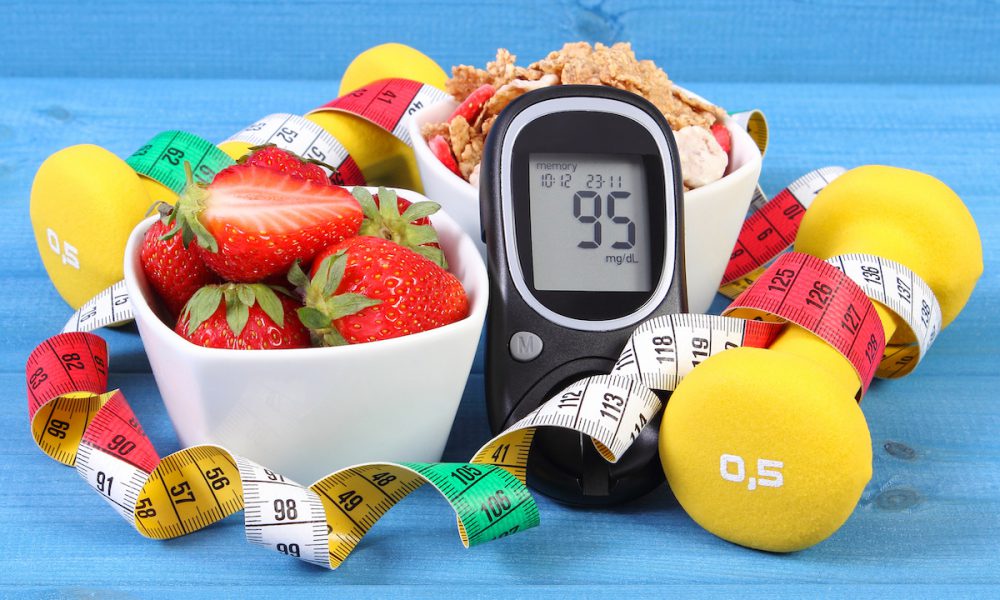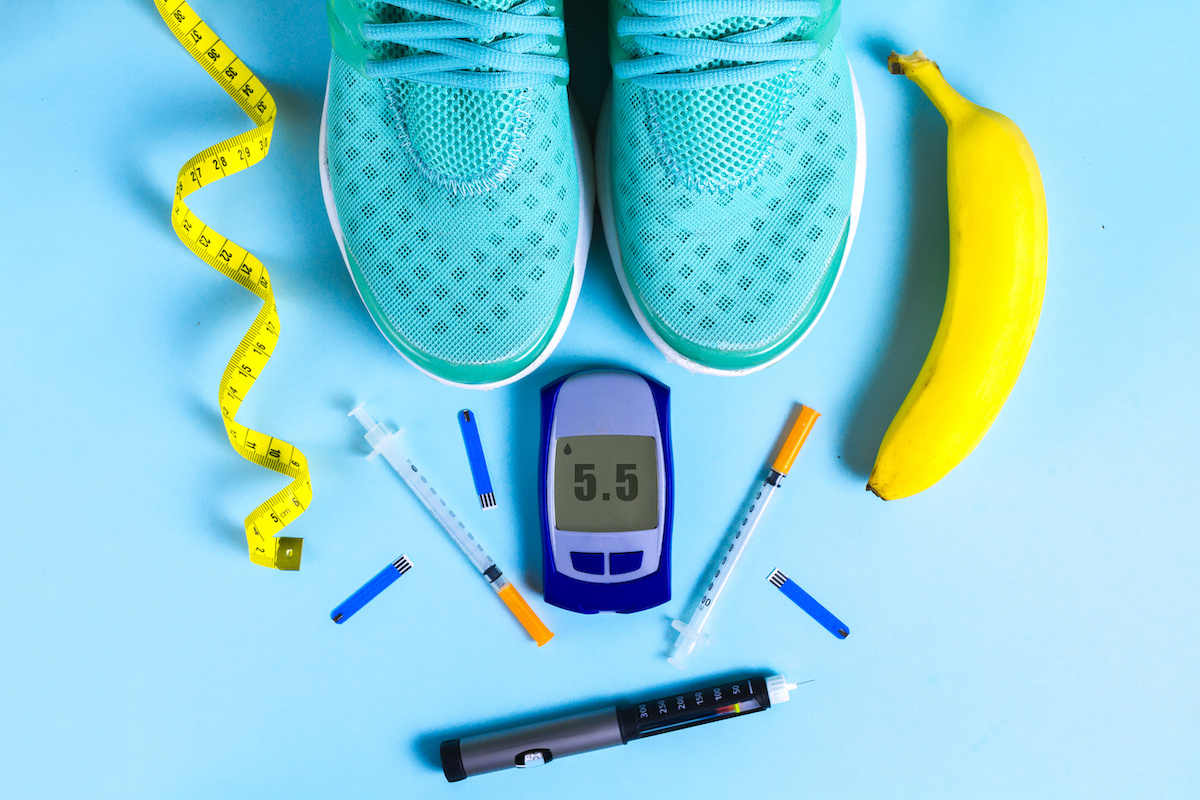
Whether you or a loved one is diagnosed with diabetes, this can be a life-changing diagnosis. It can also drastically alter your lifestyle, including diet and exercise habits. You may also need to take daily medication or even insulin to help manage your diabetes. Pharmacy customers often wonder how to manage diabetes, and if diabetes can be reversed at all.
The good news is that you are able to manage diabetes while living an otherwise normal life. In this blog, we will discuss what diabetes is, what it does to the body, and how to manage diabetes effectively.
What is Diabetes?
Diabetes is a disease that results in too much sugar in the blood. This is also known as high blood glucose levels.
Unfortunately, diabetes is a chronic health condition. It affects the way that your body turns food into energy. When a person eats food, most of what is consumed is broken down into sugar, otherwise known as glucose. The food is then released to your bloodstream. When the blood sugar rises, as it was a pancreas to create insulin. Insulin acts as an entry point that allows the blood sugar into your cells to use energy.
However, if you have diabetes, this process doesn’t work as well. Your body may not make enough insulin or it may not be able to use the insulin it has. If there’s not enough insulin, the cells stop responding and too much blood sugar remains in the bloodstream. This results in serious health consequences, ranging from vision loss to kidney disease and heart disease.
What are the Types of Diabetes?
Diabetes is a group of diseases. There are three common types of diabetes that you will hear about:
- Type 1 diabetes: Typically appearing in adolescence, this is the rarest form of diabetes with fewer than 200,000 cases per year. This is a chronic condition where your pancreas will produce little to no insulin. Type 1 diabetes essentially does not have an entry point for allowing insulin to enter the blood cells.
- Type 2 diabetes: This is the more common form of diabetes, although it is also a chronic condition in the way that your body processes blood glucose levels. Your body either doesn’t produce enough insulin or it resists insulin.
- Prediabetes: This is where you have high blood sugar levels but they are not high enough to constitute type 1 or type 2 diabetes. If you have pre-diabetes, this does not necessarily mean that you will progress into type two diabetes.
The good news is that type two diabetes and prediabetes are reversible! There are steps that you can take to reverse tape to and pre-diabetes, essentially putting it into remission.
What are the Signs of Diabetes?
If you have yet to be diagnosed with diabetes or you suspect a loved one might have it, you might be wondering about the signs of diabetes. These are a few of the most common signs that you will experience:
- Excessive thirst
- Frequent urination
- Blurred vision
- Fatigue
- Increased hunger
- Fatigue
- Dry mouth and itchy skin
- Slow healing cuts and sores
- Pain and numbness in feet or hands
- Weight gain or loss
- Hypoglycemic symptoms
- Stomach problems including nausea
If you have yet to be diagnosed with diabetes, the best step to take is to schedule an appointment with your family physician. They will conduct a blood test to determine whether you have diabetes, and what kind of diabetes that you may have. If your blood work results show diabetes, your doctor may prescribe you medicine or insulin depending on the type of diabetes. Common medications for diabetes include glyburide and metformin.
What if you were diagnosed with pre-diabetes? If this is the case, you will be given instructions for lifestyle changes that will help reverse prediabetes. You may also be prescribed a daily medication. You will need to closely monitor how you feel while you are on the medication so your family doctor can make adjustments as needed.
From there, your family physician may request that you return back to the office in a couple of months to run another blood test. This will help determine where your blood sugar level stands after making an effort with a different lifestyle change and possible medication, depending on what your doctor decides.

How to Manage Diabetes
Once you are officially diagnosed with type one, type two, or prediabetes, it’s important to make an effort to get it under control. Unmanaged diabetes can result in a slew of health consequences, including worsening symptoms from the list above.
In the worst case scenario, serious heart problems, kidney problems, and eye problems may occur. In fact, a diabetic is twice as likely to have heart problems as a non-diabetic.
Getting on the path to diabetes management can help turn your symptoms around and potentially even save your life.
Focus on Nutrition
First, take a step back and look at your eating habits. Proper nutrition helps blood glucose levels remain as close to normal as possible. It also reduces the risk for vascular disease and lowers blood pressure in the normal range, or as normal as possible.
To effectively manage diabetes with nutrition, you will need to come up with an eating plan which may involve the following:
- Filling your plate with non-starchy vegetables: Non-starchy vegetables such as broccoli and cauliflower are lower in carbohydrates. This means they do not raise your blood sugar by much. Furthermore, these vegetables are high in vitamins, minerals, and fiber, making them an essential part of your diet. Asparagus, cabbage, celery, cucumber, and salad greens are also excellent examples of non-starchy vegetables.
- One quarter of your plate should include lean proteins: This includes proteins such as chicken, fish, lean beef, soy products, and cheese. Protein food intake from animal sources and contain saturated fat, which may increase the risk of heart disease. This is why choosing lean proteins is important because they are lower in fat and saturated fat. Don’t forget that there are plant-based proteins available such as beans and legumes. Nuts, nut butters, and even tofu can help serve as protein.
- A quarter of your plate should include carbohydrates: As a diabetic, you do not need to be afraid of carbohydrates. While carbohydrates have the greatest effect on blood sugar, eating them in moderation is perfectly fine. You will want to concentrate on specific types of carbohydrates, such as brown rice, popcorn, whole grain products and forms of bread and pasta, starchy vegetables including potatoes, fruits, dried fruit, and dairy.
- Carefully consider the drinks that you have throughout the day. You are best to stick with low to no-calorie drinks, such as plain water or black coffee. While diet sodas may have 0 calories on the label, they are still filled with artificial sweeteners which can be a poor choice for those with diabetes or pre-diabetes. It is best to stay away from both sugar and artificial sweeteners when it comes to your drink choices.
Advantages of 5% to 7% of Weight Loss
Did you know that losing 5% to 7% of your body weight can decrease the risk of developing diabetes by 58%? If you have type 2 diabetes, losing weight can also illuminate or reduce your need for medication.
Achieving or staying at a healthy weight is important for everyone, but especially those with diabetes. If you are diabetic and need to lose weight, the best place to start is by reducing sugar and processed carbohydrates.
In the meantime, you will want to increase healthy fats such as nuts and avocados, along with adding lean protein sources, whole grains, and non-starchy vegetables. Even making small changes over time can add up to big differences in the long run.
If you are struggling with your eating habits as a diabetic or prediabetic, please contact your family physician. They will be able to help supply you with a meal plan that is suitable for your needs.
Exercise for Diabetics
Unsurprisingly, exercise is also important when it comes to managing diabetes. Before you begin exercising, you want to make sure your glucose level is not too low, which would be below 100 MG/DL. If you exercise while your blood sugar levels are too low, it may put you in a hypoglycemic episode.
On the other hand, exercising when your blood sugar is too high is also unsafe. This is because exercise can sometimes raise your blood sugar. You should always speak with your family physician before beginning an exercise program.
Meanwhile, there are plenty of exercise options for diabetics. While exercise is recommended, this does not mean that you need to take up running a marathon, unless you want to!
The American Diabetes Association recommends that you get at least 150 minutes of moderate to vigorous aerobic activity each week. You can take up activities including walking, swimming, dancing, cycling, resistance band exercises, yoga, and Pilates.
Get Automatic Refills on Diabetes Medication
Do you have questions about medicine or insulin to help manage your diabetes? Our knowledgeable staff can answer questions about side effects and more. Please contact us or stop by our pharmacy with questions. Also consider signing up for our SyncRX Refill Prescription program, offering free delivery each month along with a monthly call from a pharmacist and hassle-free automatic refills. Click here to learn more.